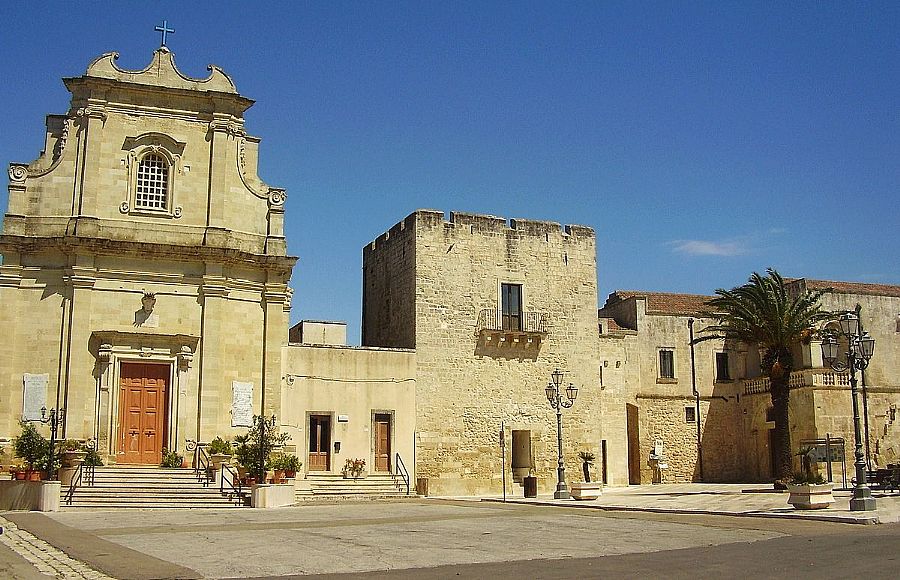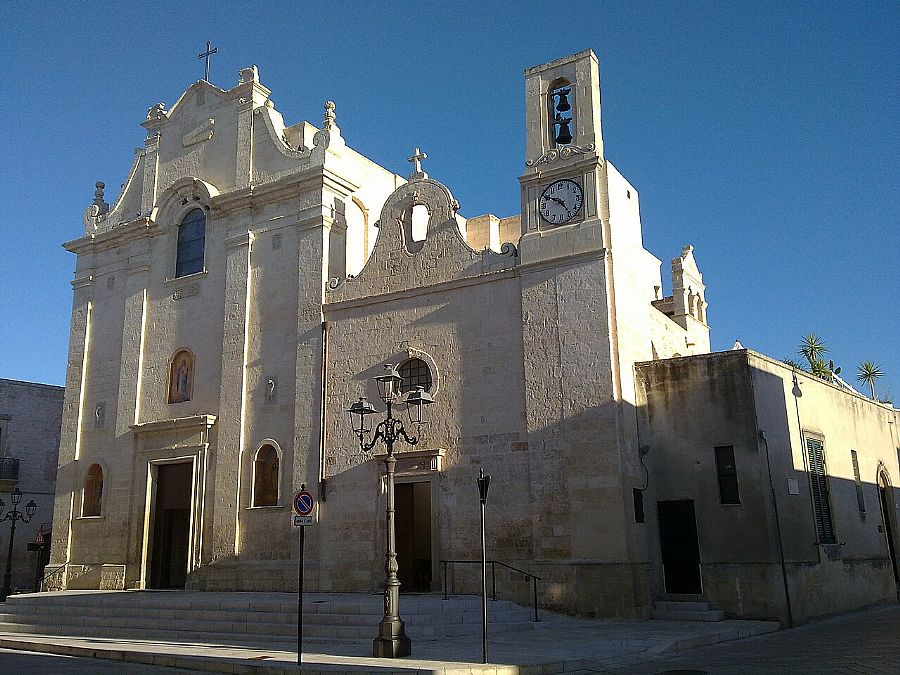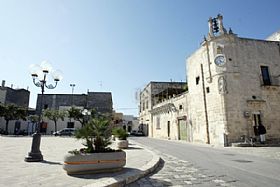Poggiardo

In the sun-drenched Salento zone of Puglia, Poggiardo rests about halfway between Lecce and Santa Maria di Leuca at the tip of the heel. It is northwest of Castro, and gained residents when that town was sacked in the 1500s. In fact, the bishop's seat was moved to Poggiardo in 1573, raising its status and its fortune in terms of new buildings and arts.
But the town's history goes way back to pre-Roman eras with the Messapic people who populated the Salento in the seventh century BC. It wasn't until the middle ages that Poggiardo became more built up and populated, and in the 14th century the castle was built, along with protective walls when the town was under the Principate of Taranto. It was then the feudal territory of the Guarini family, and indeed the largest private palazzo in Poggiardo is Palazzo Guarini. Much of the old town is built with narrow streets lined with homes called "case a corte" - contiguous buildings, with one main entry door to each, opening into an internal courtyard.
The Church of San Salvatore is the main church in town, built in the 1400s but the facade and decoration was redone in baroque style in the 17th century. Puglia loved baroque and went all out with the adornments of that era, as you can see to grand effect in Lecce, only a half-hour away. The plain church of San Francesco is rarely open but if it is, go inside to see the paper mache statues, a Salento-area tradition. The one sight you shouldn't miss is the Crypt of Santa Maria degli Angeli, with breathtaking Byzantine frescoes. There were ties between Puglia and the Byzantine world, and many monastic churches were established in the 500s and beyond, many of them hermitage orders. They decorated cave-churches and other places in iconic images from the 10th century on, that have survived the centuries. When the Greek rite was banned in the Salento in the 1580s, the crypt-church was closed and fell into disrepair. Luckily, the frescoes were detached and restored, and are now on display in their original order in the Museo degli Affreschi below Piazza Episcopo.
The frazione of Vaste is part of Poggiardo, the ancient Bastae Messapic settlement from 7th century BC, an open-air museum.
Around Poggiardo are some great restaurants, pizzerias, cafes and bars. Be sure to taste the area's time-honored foods, like friseddhe, a peasant dish of rehydrated stale bread with excellent olive oil, fresh tomatoes and olives; it's so much better than it may sound. The puccia is a flatbread that is filled for sandwiches, like pita. The area's abundant sunshine produces a host of fruits and vegetables that are used in almost all the dishes -pasta, rice, mains and on their own. And pesce a salsa brings fish from the nearby coast, fries it and drizzles it with an herb vinegar sauce. Give it a try! And of course the Salento wines are the perfect thing to go with any of these treats.
Poggiardo puts on several festivals througout the year, many of them tied to saint days (but include food and dancing, too). Meatball fans won't want to miss the Festa della Polpetta in August, with...lots of meatballs! :)
Have you seen our self-catering apartments in Poggiardo?

 Amalfi Coast
Amalfi Coast Sorrento Coast
Sorrento Coast Tuscany
Tuscany Cilento National Park
Cilento National Park Lake Como
Lake Como Rome and Latium
Rome and Latium Umbria
Umbria Capri and Ischia
Capri and Ischia Venice
Venice Puglia (Apulia)
Puglia (Apulia) Liguria
Liguria Sicily
Sicily Lake Maggiore
Lake Maggiore Lombardy
Lombardy Sardinia
Sardinia Lake Garda
Lake Garda Abruzzo and Marche
Abruzzo and Marche Calabria
Calabria


Been there? Done that? Share your experience and tips!
Haven't visited yet? Have questions about Poggiardo? Ask them here!